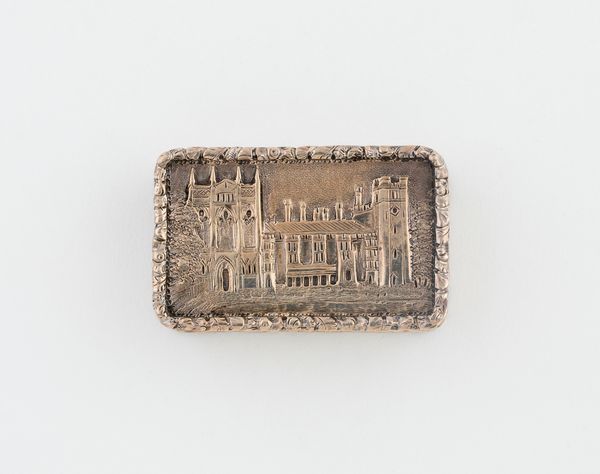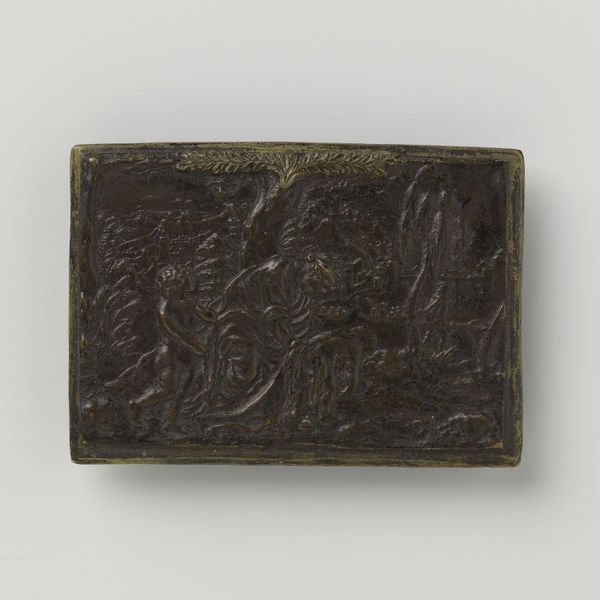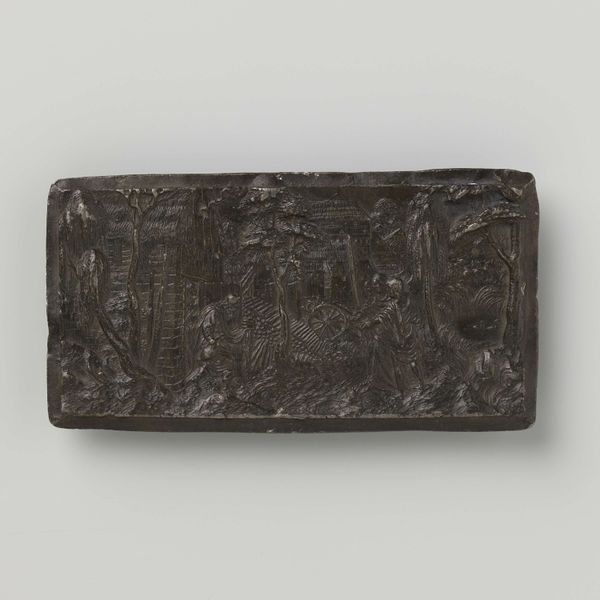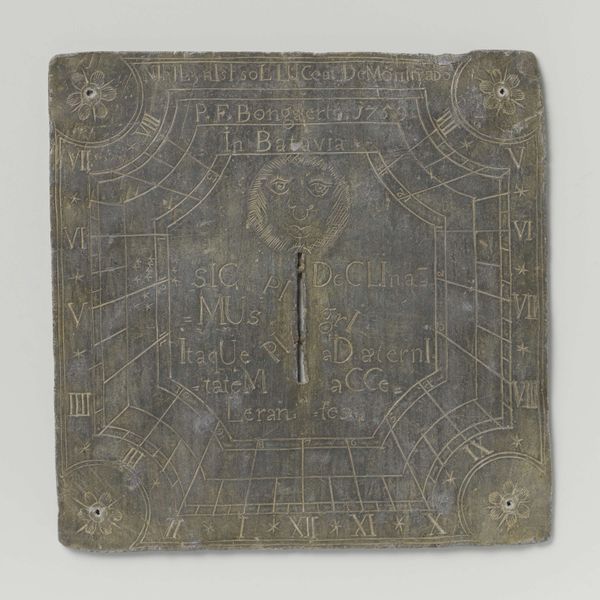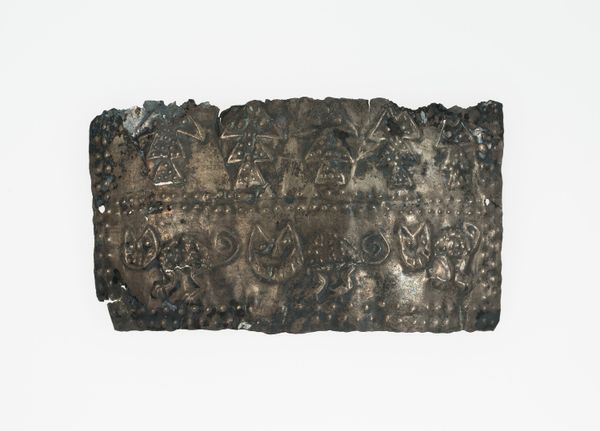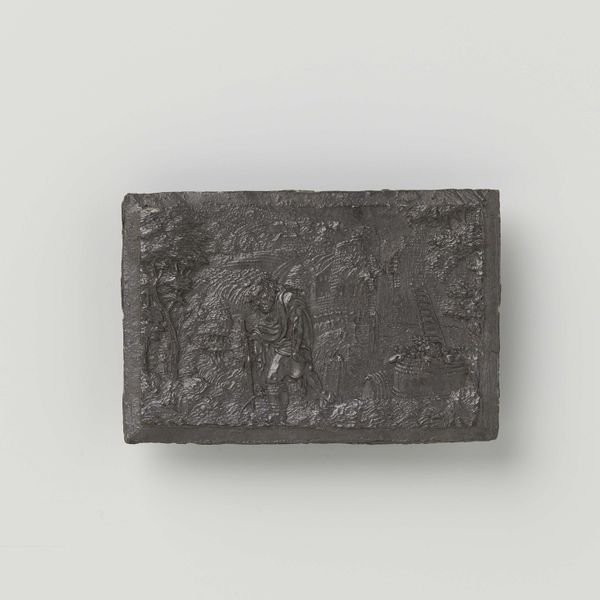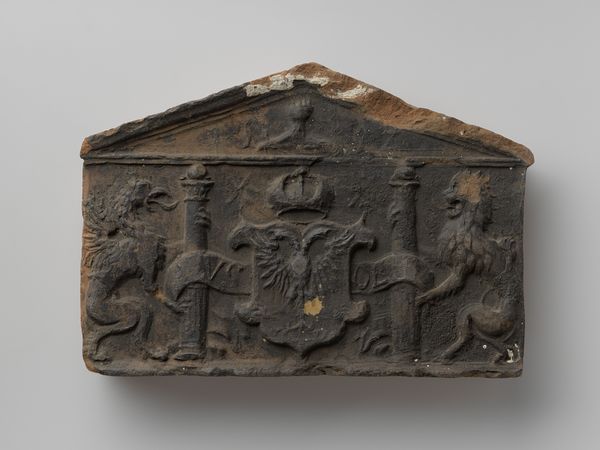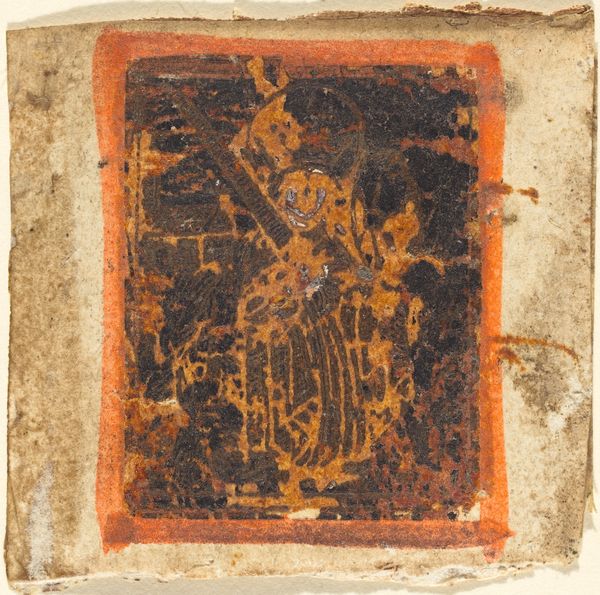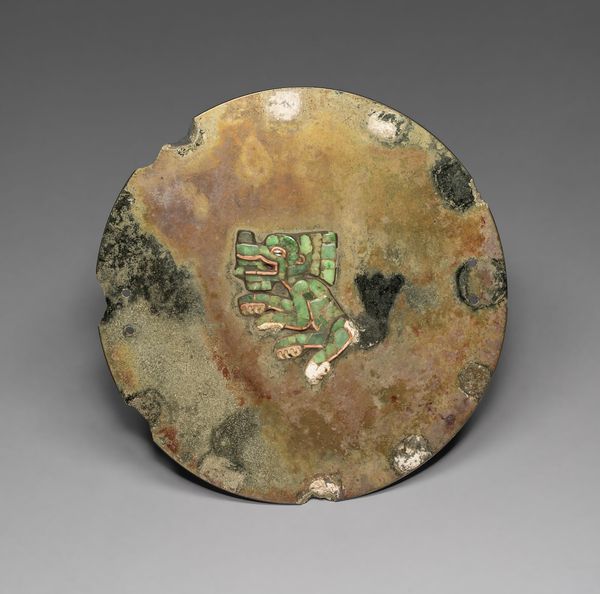
Amuletic plaque of Paser, the Vizier of Seti I and Ramesses II 1294 BC
0:00
0:00
carving, relief, sculpture
#
carving
#
sculpture
#
relief
#
ancient-egyptian-art
#
egypt
#
ancient-mediterranean
#
sculpture
Dimensions: L. 1.7 × W. 1.1 × D. 0.7 cm (11/16 × 7/16 × 1/4 in.)
Copyright: Public Domain
Curator: Immediately, I'm struck by the intimacy of this object. There's a tenderness evoked by this "Amuletic Plaque of Paser," dating back to 1294 BC. It’s located here at the Met. Editor: It is petite and fascinating! There's a compelling roughness to its craftsmanship, a stark contrast to the typical idealized polish of ancient Egyptian art. The turquoise background especially intrigues me against what looks like dark gold inlays. Curator: Absolutely. Consider Paser's role as Vizier under Seti I and Ramesses II. He was not just an administrator, but a crucial figure overseeing resources and labor. This plaque, therefore, is more than a religious token. Editor: More than religious; I agree. I wonder about the material – how it was sourced, who crafted it. This was during the Nineteenth Dynasty. Who were the laborers? How much time was dedicated to the crafting? The materiality of labor and its historical footprint here demands contemplation. Curator: Let's unpack that a little, formally. Notice the relief carving, and how figures are positioned against the plane, giving a layered effect, although subtle, of course, due to the object's scale. And it seems clear to me the aesthetic is a synthesis of traditional conventions with what I read as individualized elements. Editor: To build on your point of traditional artistic convention. I see it in the symbolic weight assigned to its presence during religious and bureaucratic life. Its creation surely hinged upon specific networks of exchange within the wider imperial administration of the period, suggesting a commodity flow intimately entwined with governance and beliefs. Curator: What really stands out is that a patron of Paser's stature had the agency to request—or demand—an object expressing, even slightly, a more individualized style in this context. Editor: Agreed. Examining the materials—how the blue hue might echo a river or sky in religious art or contrasting against gold’s allusion to permanence—provides insights to labor systems, trade routes, and power structures. These tangible aspects tell a story. It urges to connect the granular aspects of production and reception of artifacts to the wide picture of life. Curator: Indeed, in our explorations, we find an elegant dance between power and identity, between the immutable laws of Egyptian artistry and this rare little peek at the human element. It gives us a privileged view. Editor: Exactly! That intimate artifact bridges the vast expanse between past social relations, systems, and ideologies – all encapsulated within such tactile dimensions, creating an enduring resonance with its world and its history.
Comments
No comments
Be the first to comment and join the conversation on the ultimate creative platform.

